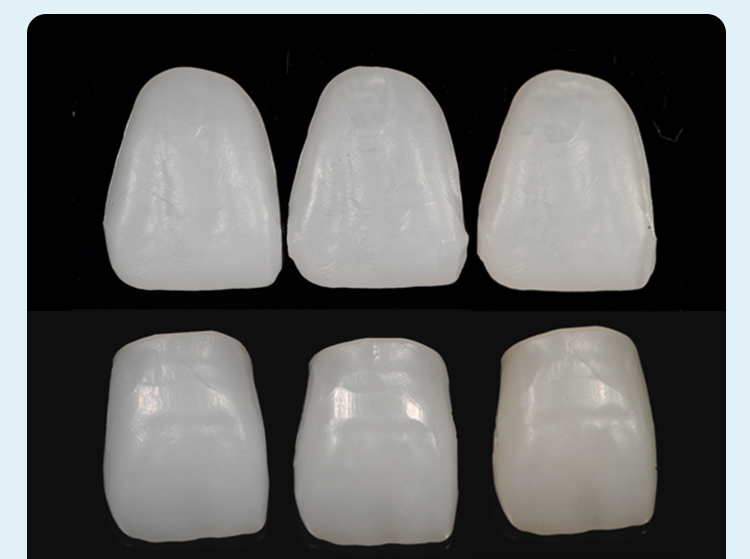
Dental zirconia block color methods are varied, the choice of pigments is also crucial, the following is a detailed introduction to these two aspects:
Coloring method
Immersion dyeing method:
This is one of the most common methods of coloring. The zirconia block is completely immersed in the dye containing pigment, and taken out after a certain period of time, and then dried and sintered.
Dyeing solutions usually contain additives such as solvents, metal cations (colorants), complexing agents, and dispersants. By adjusting the concentration of the dye and soaking time, you can control the depth of the color.
The whole zirconium restoration made by immersion dyeing method has uniform color penetration after dyeing, avoiding the problem of discoloration after grinding.
Brush + Soak method:
First use the porcelain pen and other tools to paint the special effect of the pigment on the zirconia block in a specific area (such as the cutting end, groove, etc.), and then soak dyeing.
This method can more accurately control the color distribution and shade, and achieve more complex color effects.
For example, the tip of the teeth can be painted with the cutting end solution, and the entire restoration can be soaked with the target color dyeing solution to achieve the desired color effect.
Laser coloring method:
The laser beam is used to accurately color the surface of the zirconia block.
This method can produce a very delicate and uniform color effect, but the equipment is expensive, the operation is complex, and the cost is high.
Precoloring method:
Colorant was added in the process of making zirconia powder, and the colored zirconia block could be obtained after sintering by grouting molding, uniaxial pressing, chemical vapor deposition and hot isostatic pressing.
This method has stable color, but poor flexibility, and is difficult to meet the individual needs of different patients.
Pigment selection
Metal oxide pigments:
For example, iron oxide (Fe₂O₃), PR.oxide (Pr₆O₁₁), and cerium oxide (CeO₂) were ₆.
These pigments have good stability and high temperature resistance, and can maintain color stability during the sintering process.
By adjusting the type and proportion of metal oxides, various colors can be prepared.
Special effects pigments:
Such as magic liquid T0, etc.
These pigments have special optical effects, such as improving permeability, imitating white spots, calcification and so on.
The use of special effects pigments can achieve more complex color effects and improve the aesthetics of the restoration.
Color precautions
Clean the surface:
Before coloring, ensure that the surface of the zirconia block is clean and free of impurities such as oil and dust.
You can use a brush, air gun and other tools to clean.
Control coloring time:
The length of painting time will directly affect the depth of the color.
In general, the longer it takes to paint, the darker the color. However, too long coloring time may result in too dark color or rough surface.
Drying and sintering:
After coloring is completed, adequate drying should be carried out to remove residual water and solvents.
After drying, it is then sintered to fix the color and improve the mechanical properties of the restoration.
The control of sintering temperature and time is also very critical and needs to be carried out in strict accordance with the manufacturer's recommendations.
Individual needs:
While meeting the basic aesthetic and mechanical requirements, the individual needs of the patient should also be fully considered.
Individual restoration results for different patients can be achieved by adjusting the coloring method and pigment selection.
In conclusion, dental zirconia blocks have a variety of coloring methods, and the choice of pigments is also crucial. In actual operation, the appropriate coloring method and pigment should be selected according to the specific situation and needs of the patient to achieve the ideal repair effect.